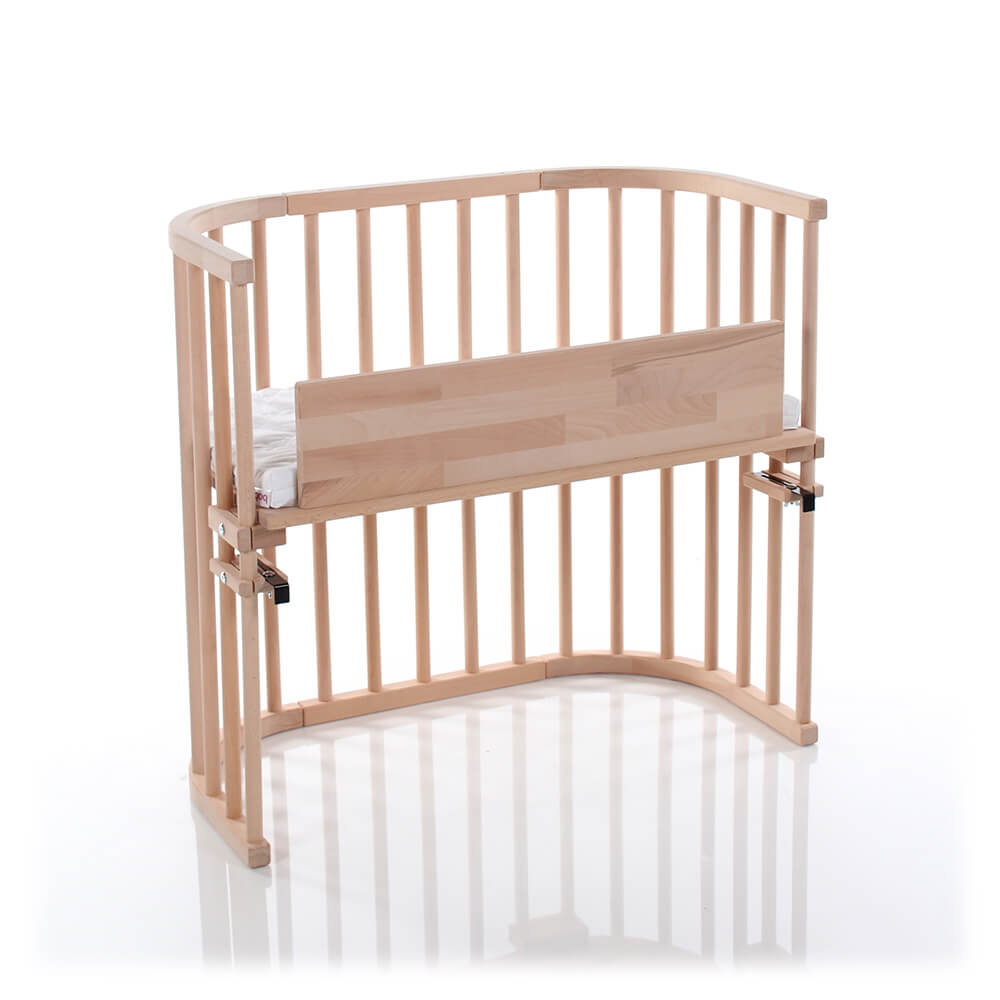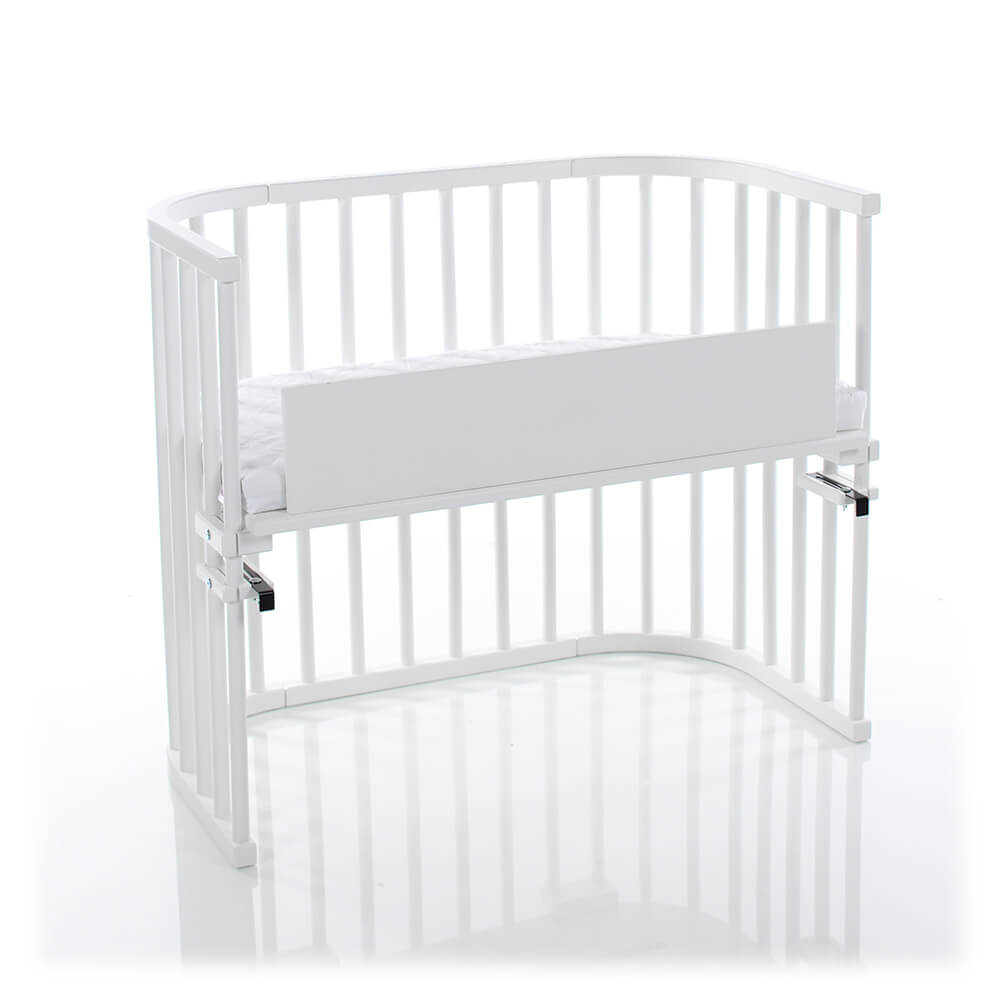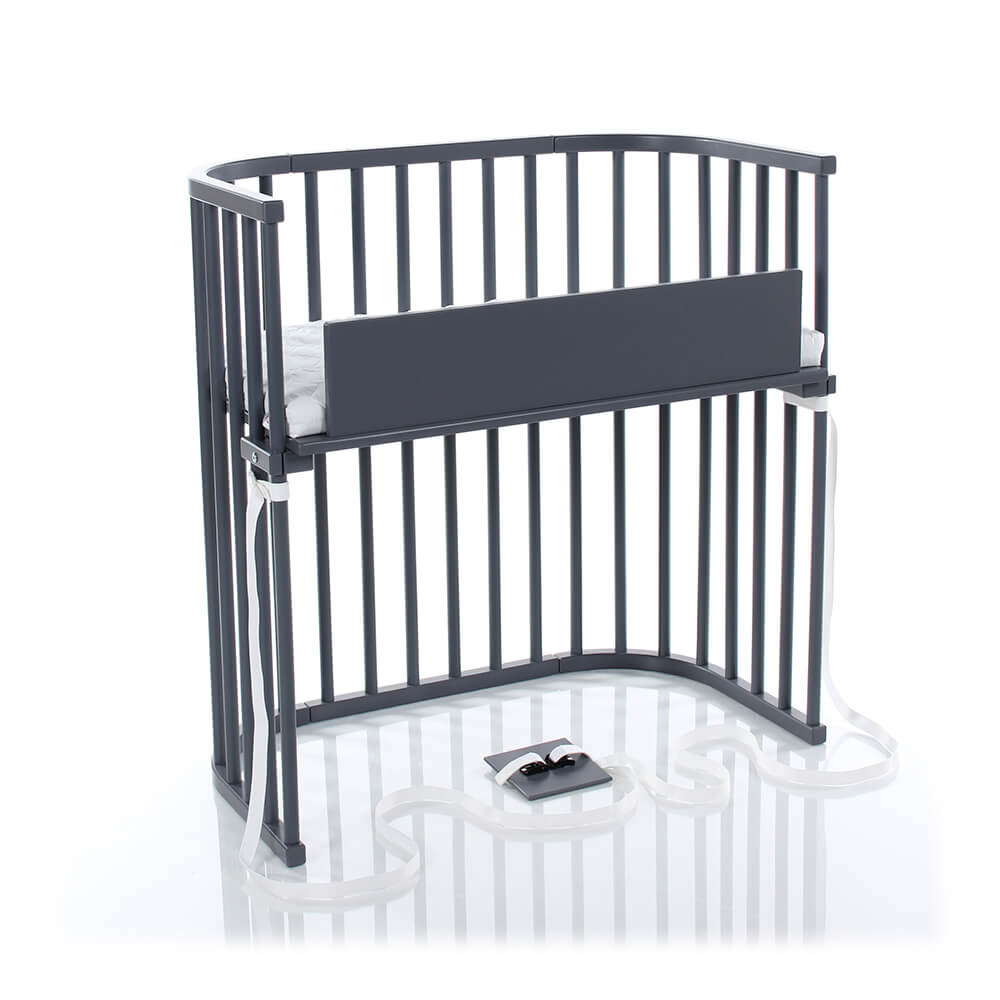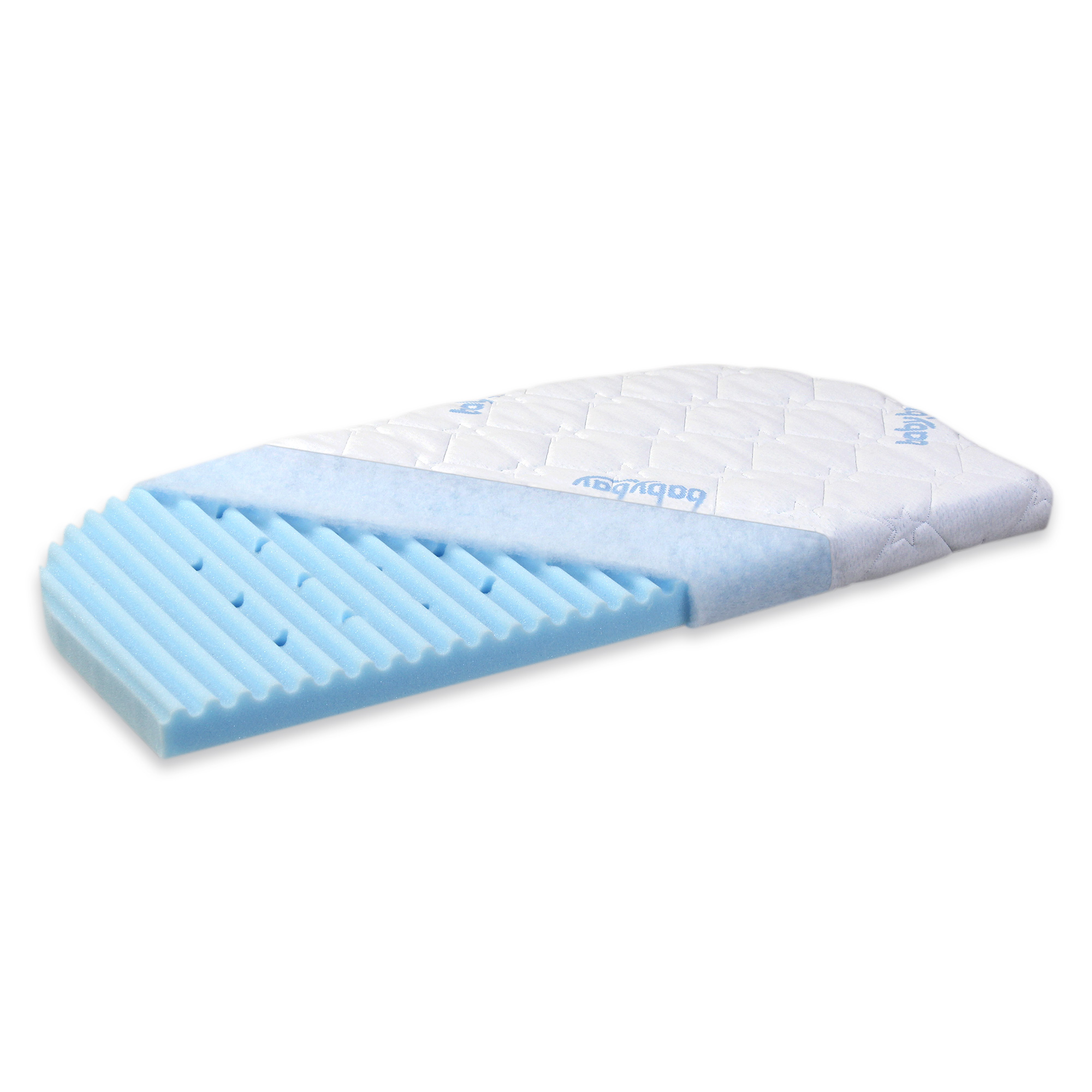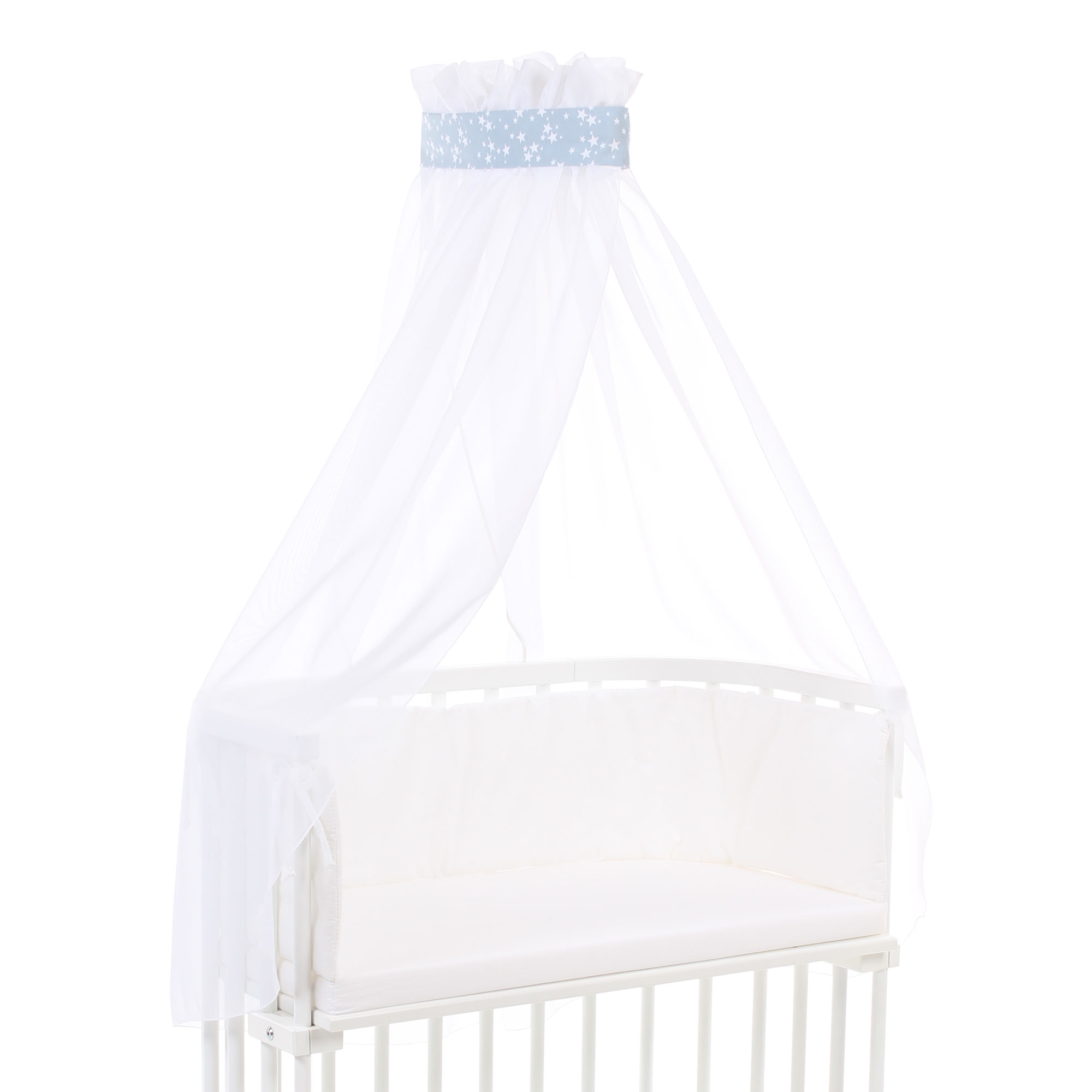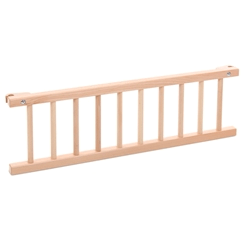There’s the kind of co-sleeping that involves bringing your baby into your own bed…and then there’s a co-sleep crib.
Co-sleep cribs (or bedside co-sleepers, as some people prefer to call them) sit flush against your bed and allow you to sleep side-by-side with your little one.
This delivers all the co-sleeping benefits that leaves parents singing the sleeping practice’s praises (easier nighttime nursing and healthier development for baby among them). While also giving your baby a made-just-for-them place to rest throughout the night that will leave you sleeping soundly with full peace of mind.
Sounds like a dream, doesn’t it? 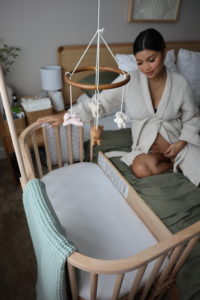
But some parents come across one big, stop in their tracks roadblock when they start preparing to co-sleep: their bed is just too tall to co-sleep safely with a bedside co-sleeper.
Before you head out to buy a traditional crib or throw out your long-loved mattress for something a little shorter, here’s what you should know about using a co-sleeper bed crib. Even if you have the tallest bed on your block.
First Thing’s First: Not Every Co-sleeping Crib Bed Is the Same
For parents just starting off on their safe co-sleeping journey, the first questions on their mind are often: What is co-sleeping? and How do I practice it safely?
(Hint: it’s easier than you think to safely co-sleep!).
However, the third question (aka: the one that comes up as soon as you start hunting around on Google for a co-sleeper to bring into your home) is: Will this co-sleeper crib baby bed I’ve fallen in love with even fit against my mattress?
This is a fair question to ask, since the safety of your co-sleeper bed crib depends on its ability to sit tightly against your mattress and leave no gaps that could pose a risk for your baby.
Most co-sleepers come in different sizes, or offer adjustable height options that give you the chance to fit your baby’s sleep surface close to your bed no matter the height of your mattress.
For instance, the babybay bedside sleeper blends its all-natural, solid beechwood design with three models to choose from: the babybay Original, the babybay Maxi, and the babybay Maxi Tall. 
Each adjusts to a different height (the Original suits between 10” – 25”, while the Maxi Tall goes up to 31”). Which allows parents to choose the option that works best for them, while still getting the look and all-important safety certifications that make the babybay one of the most-loved co-sleepers on the market.
How do I make sure I’m choosing the right Co-sleeping Crib to fit my tall bed?
When your furniture veers towards higher heights, the key is to find a manufacturer that is upfront about the sizes of beds their co-sleeping cribs suit.
When it comes to buying a co-sleeping crib attached to bed, height and fit are too essential pieces that ensure that co-sleeping remains a safe and peace of mind-filled way for your family to get rest at night.
You shouldn’t have to buy a co-sleeper crib baby bed, get it delivered in the mail, and immediately wonder Have I made a mistake?
(Just like you shouldn’t have to “just go with” whatever crib or co-sleeper you’ve bought, while wondering if it’s really the one that meets all your needs.)
Seek out a company that not only emphasizes how important bed heights can be when determining what co-sleeper bed crib to buy, but is also transparent about whether or not their products will fit your specific furniture.
With a tape measure handy, you should be able to measure your mattress and know whether the height you’re seeing lines up with their tallest model.
My Co-sleeper or Co-Sleeping Crib Bassinet Just Won’t Fit My Tall Bed! Now What?
It’s rare that parents or parents-to-be have a bed that extends well over the height requirements set by bedside crib manufacturers. But it happens.
If you need to use a mini staircase to step up into your mattress, you might find yourself in a tough spot when it comes to finding a co-sleeping crib attached to bed that suits you and your decor. While also helping your baby sleep safely. 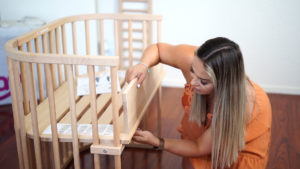
It might be hard to hear, but rather than trying to adapt your bedside crib to fit your bed, it’s a better idea to adjust your own sleeping setup in small ways to ensure that your co-sleeping crib remains safe (and your baby remains safe in it!).
Some parents choose to move their bed off its bed frame for the months when their baby is using a co-sleeping crib. Or switch out their current bed frame with a platform that suits their co-sleeping crib bed a bit better.
But switching out your furniture should be a last resort.
When in doubt, we recommend getting in touch with the manufacturer of the co-sleeping crib that’s interesting you.
If they take safety as seriously as you do, they’ll be more than happy to answer any questions about your specific setup. And give you some alternative options (like converting a co-sleeper into a bedside bassinet) that will help you take advantage of all the co-sleeping benefits you can’t wait to enjoy.
While also being confident that your baby is sleeping safely through the night in their co-sleep crib.

